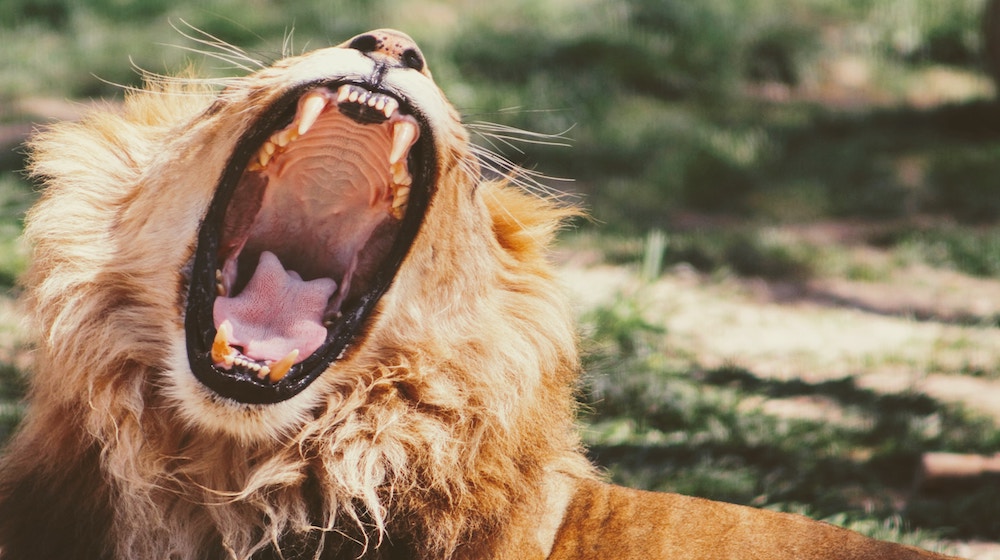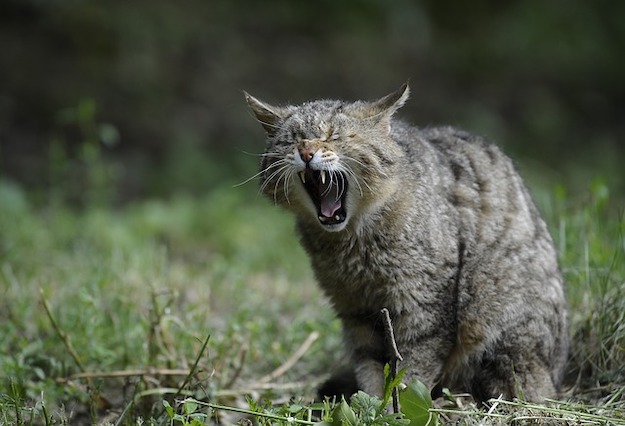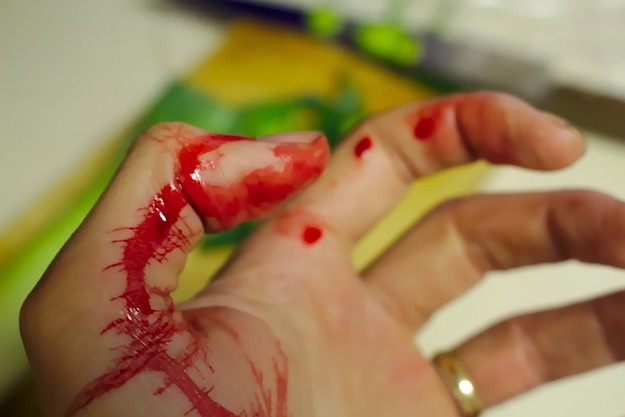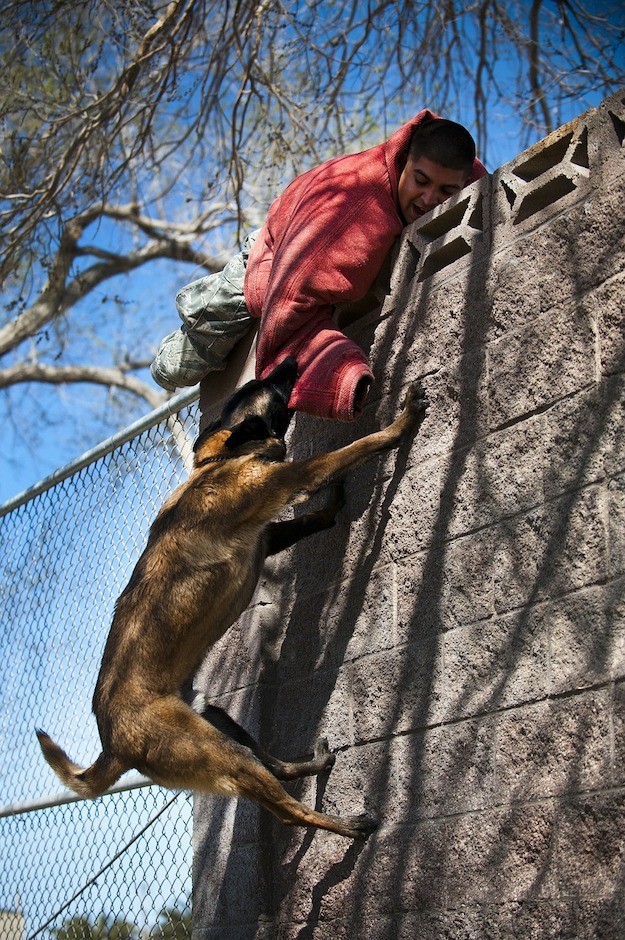Family
What To Do When Animals Attack

Most people have, at some time of their life, run afoul of an ornery dog or cat. Most animal bites will be puncture wounds; these will be relatively small but have the potential to cause dangerous infections.
Although many Preppers are wary of vaccines, it may be appropriate to make sure that everyone in your group has had a tetanus shot.
Most animal bites affect the hands (in adults) and the face, head, and neck (in children).
Domestic pets , such as cats, dogs, and small rodents are the culprits in the grand majority of cases.
Dog bites are usually more superficial than cat bites, as their teeth are relatively dull compared to feline bites. Despite this, their jaws are powerful and can inflict crush injuries to soft tissues.
Cats’ teeth are thin and sharp, and puncture wounds tend to be deeper.
Both can lead to infection if ignored, but the cat bites inject bacteria into deeper tissues and seem to become contaminated more often.

Although healthy people can be made very ill by animal bites, you are most at risk for serious damage if you are elderly, diabetic, immunocompromised (transplant patients, AIDS victims, etc.), or have liver disease.
Besides the trauma associated with the actual bite, various animals carry disease which can be transmitted to humans. Here are just a few diseases and the animals involved:
- Rabies: Viral disease spread by raccoons, skunks, bats, opossums, and canines.
- Pasteurellosis: Bacterial naturally present in the mouths of both dogs and cats.
- Yersinia Pestis: Bacterial disease associated with rats and fleas; otherwise known as the “Plague”.
- Tuberculosis: Bacterial disease associated with deer, elk, and bison.
- Brucella: Bacterial disease associated with bison, deer, and other animals.
- Hantavirus: Viral disease caused by mice.
- Baylisascaris (raccoon roundworm): Parasitic disease associated with raccoons.
- Histoplasma: Fungal disease associated with bat excrement (guano).
- Tularemia: Bacterial disease associated with wildlife especially rodents, rabbits, and hares.
Whenever a person has been bitten, the first and most important action is to clean the wound thoroughly after stopping any bleeding. Benzalkonium Chloride is the best antiseptic to use in treating animal bites, because it has some effect against the Rabies virus. Frequent irrigation (flushing out) with dilute antiseptic solutions like Betadine or even sterilized water will be important to prevent infection.

Be sure to watch for signs of infection such as redness, warmth, and swelling in the wound area. Pain that increases with time is another warning sign. General signs of infections such as fever are also red flags that further treatment is warranted. Antibiotics may be appropriate in many cases. If the bite is on the hand, any rings or bracelets should be taken off; if swelling occurs, they may be very difficult to remove afterwards.

Given the risks, it would be wise to consider preventive measures. Stay away from stray or wild animals, and especially from animals protecting their young. Wear long pants and high-top boots when walking in the wilderness and carry a good personal carry first aid kit.
Rabies is a dangerous but, luckily, uncommon disease that can be transmitted by an animal bite, especially those from wild animals such as raccoons, opossums, skunks, coyotes, etc. Any animal bite should be considered a “dirty” wound, and should not be taped or sutured.
In the United States, there has never been a rabies case transmitted by the following animals: domestic cattle, squirrels, rabbits, rats, sheep or horses. Although this is a good thing, the severity of the consequences of a rabies infection can’t be underestimated. Once a person develops the disease, it is usually fatal. Vaccinations are available, and regardless of your opinion regarding them, it might be something to consider.
Dr. Bones
via Animal Bites | Doom and Bloom (TM).
Animal Attack: How to Survive
11 Tips to Avoid Animal Attacks
Identifying Animal Tracks
-

 Do It Yourself7 months ago
Do It Yourself7 months agoParacord Projects | 36 Cool Paracord Ideas For Your Paracord Survival Projects
-

 Do It Yourself9 months ago
Do It Yourself9 months agoHow To Make Paracord Survival Bracelets | DIY Survival Prepping
-

 Do It Yourself9 months ago
Do It Yourself9 months ago21 Home Remedies For Toothache Pain Relief
-

 Do It Yourself9 months ago
Do It Yourself9 months agoSurvival DIY: How To Melt Aluminum Cans For Casting
-

 Exports8 months ago
Exports8 months agoAre Switchblades Legal? Knife Laws By State


Bob R
July 1, 2013 at 8:24 AM
I question the use of benzalkonium chloride in treating animal puncture wounds. Several web sites, normally reputable, recommend AGAINST such use. See http://www.drugs.com/cdi/benzalkonium-chloride-solution.html as an example. Normally benzalkonium chloride is use as a topical only antiseptic.
GRAYWOLF12
July 1, 2013 at 9:05 AM
Clean it best you can, apply triple antibiotic ointment, start oral colloidal silver and SEE a DOCTOR. Beside oral I would spray on 125 PPM of silver in place of triple antibiotic ointment. I suggest the antibiotic ointment because it can be purchased in small packages that are easy to carry in a back or fanny pack. Do not wait to see what will happen. Going to a doctor is much prefered to going to a hospital or mortuary.
richard1941
July 9, 2013 at 7:36 AM
Raw colloidal silver has not been shown to be effective against animal bites. It needs to be fortified by homeopathic preparation. To see why this works, just google “homeopathy” and learn about the holistic psychic aura of the energy frequency vibrations present in the molecular memory of dihydrogen monoxide.
Note that Dr. Bones and Nurse Amy have a podcast radio show that is available through some of the stations of Shoutcast Radio.
Donald Conner
July 1, 2013 at 11:26 AM
I tried to copy this file to my mass storage device but it would not copy. I could print it but I it’s quicker and cheaper to copy to MSD. Why don’t you make this electronically savable, in as much as you give us the ability to print it and make a hard copy? I think we would all, or mostly all, appreciate it very much.
Respectfully
Donald Conner
Bob R
July 1, 2013 at 12:36 PM
Donald – Do a copy and paste into any word processor (MS Word, Word Perfect, etc) of the article and then save that file in the appropriate folder. I do that all the time. The key is first copying it into a word processor program. Just to be sure, I just did it into Word Perfect with no problem.
Quester55
July 1, 2013 at 2:34 PM
A Very Good story, Contains all of the Facts, Save one. In the event of a Natural or Man-made disaster, Just where do you think a Doctor or Medical help would be located?
In the Order of Survival, Where & What, Medical Aids can be obtained Without a Prescription?
Are their any Effective, Natural Cures that really work, If your Stranded in the Wilderness?
These are the Questions, that many of us need, for survival.
Just thought I’d Ask.
Bob R
July 1, 2013 at 4:24 PM
at;
This is a question that you should be prepared to address if you went for a walk in the woods today. What would you do if you were attacked and bitten by a rabid fox? Would you go to the nearest pharmacy, or physician, or help yourself first? Treat the wounds first. Stem any bleeding. If you have a first aid kit, apply an antibiotic (which will NOT treat rabies). Then get out of the woods and get yourself to the nearest medical facility. In today’s world (not yet SHTF), you will have time to get yourself treated. When SHTF, you’re on your own. Be prepared for such situations. As for me, I’ve been immunized against rabies.
richard1941
July 9, 2013 at 7:42 AM
What do you do if you are attacked by a rabid rhino, elephant, hippo, or hippie?
There is a more dangerous creature in the woods than the rabies carrier. It consumes HUMAN BLOOD as a regular part of its diet and it transmits lethal infectious disease. It is the mosquito.
Catilieth
July 1, 2013 at 6:08 PM
Actually, rabies has been transmitted by domestic cattle, but not in the sense of being bitten by an aggressive animal, since biting is NOT what cattle do. Cattle usually develop the dumb form of rabies, which is not aggressive. They develop laryngeal paralysis and cannot swallow. The farmer assumes the animal is “choked” (has an esophageal obstruction), sticks his hand into the animal’s mouth to see if he can dislodge the apple or whatever, and now he is up to his elbow in Rabies saliva. This is less of a problem now than it was in the past, both because the incidence of rabies is lass, and farmer awareness.
Bob Hamrick
July 1, 2013 at 7:37 PM
FIRST, the wound should be MADE to bleed, within the pain limits of the individual, and the amount of blood being produced. NEXT, a liberal application of LUGOL’s Iodine in and around the trauma site. NEXT, a sterile compress taped on until the next day. THEN, remove the old bandage, gently wash the entire area with Lava® hand soap, dry with paper towel, toilet tissue, etc., then apply TRUE Colloidal Silver, and a fresh compress dampened in CS. Repeat the last steps daily until the wound is healed.
mouchster
July 1, 2013 at 10:18 PM
in a pinch and no help around…pee on the wound…
for my dog wounds, when they get angry with each other, I make a mix of garlic extract, Vitamin E, Olive oil and Cayenne red pepper..those ingredients should kill any infection and start/hasten the wound healing
richard1941
July 9, 2013 at 7:44 AM
If I ever go hiking with you, I will be very, very careful to avoid being bitten by a rabid animal!
Hujonwi
July 2, 2013 at 2:52 AM
One thing I heard about several years ago about Rabies was to get dish soap on the wound as soon as possible and it would kill the virus. Haven’t checked it out though.
William F. White
July 5, 2013 at 2:57 PM
Ummm well I liked you Post it is great but you are wrong on one count.
Opossums do not carry or transmit rabies you need to look it up.
Though they may transmit a very bacteria Infection.
I had to look this up when my dog got bit by an Opossum.
B.
July 8, 2013 at 11:15 PM
You mentioned histoplasmosis. It is also carried by birds and exposes humans when they are exposed to the bird offal. My grandmother died from this disease after cleaning old boards. Remember 1976 Ft Campbell KY when birds and people were dying from it.
Johnb171
May 15, 2014 at 3:50 AM
Immigration Lawyers …the time to read or pay a visit to the content or internet sites we have linked to below the… dfddgdbdgbef
Pingback: Google
Pingback: Animal Attack: How to Survive - Survival Life
Pingback: 11 Tips to Avoid Animal Attacks | Survival Life
Pingback: How to Survive an Animal Attack | Survival Life
Pingback: Wild Animal Attacks | What To Do When Attacked By Ferocious Beasts
Pingback: Beach Animals To Watch Out For When On Vacation
Pingback: Beach Animals To Watch Out For When On Vacation - Survive!
Pingback: How To Deter Skunks With These 7 Reliable Steps - Survive!
Pingback: How To Deter Skunks With These 7 Reliable Steps
Pingback: 7 Reliable Steps To Deter Skunks From Your Home | survivalisthandbook.com
Pingback: Wolf Pack Dangers - Wolves - Safety and Survival Tips - Survival Life
Pingback: 7 Reliable Steps To Deter Skunks From Your Home | Survival Life
Pingback: Outdoor Swamps Survival | Survival Life
Pingback: 7 Self-Defense Video Techniques You Need To Know | Survival Life
Pingback: 7 Self-Defense Video Techniques You Need To Know – Ultimate Survival Alerts
Pingback: 7 Self-Defense Video Techniques You Need To Know - WalkawayNFL
Pingback: 7 Self-Defense Video Techniques You Need To Know | BuzzBubbleDaily
Pingback: How To Survive Animal Attacks – Ultimate Survival Alerts